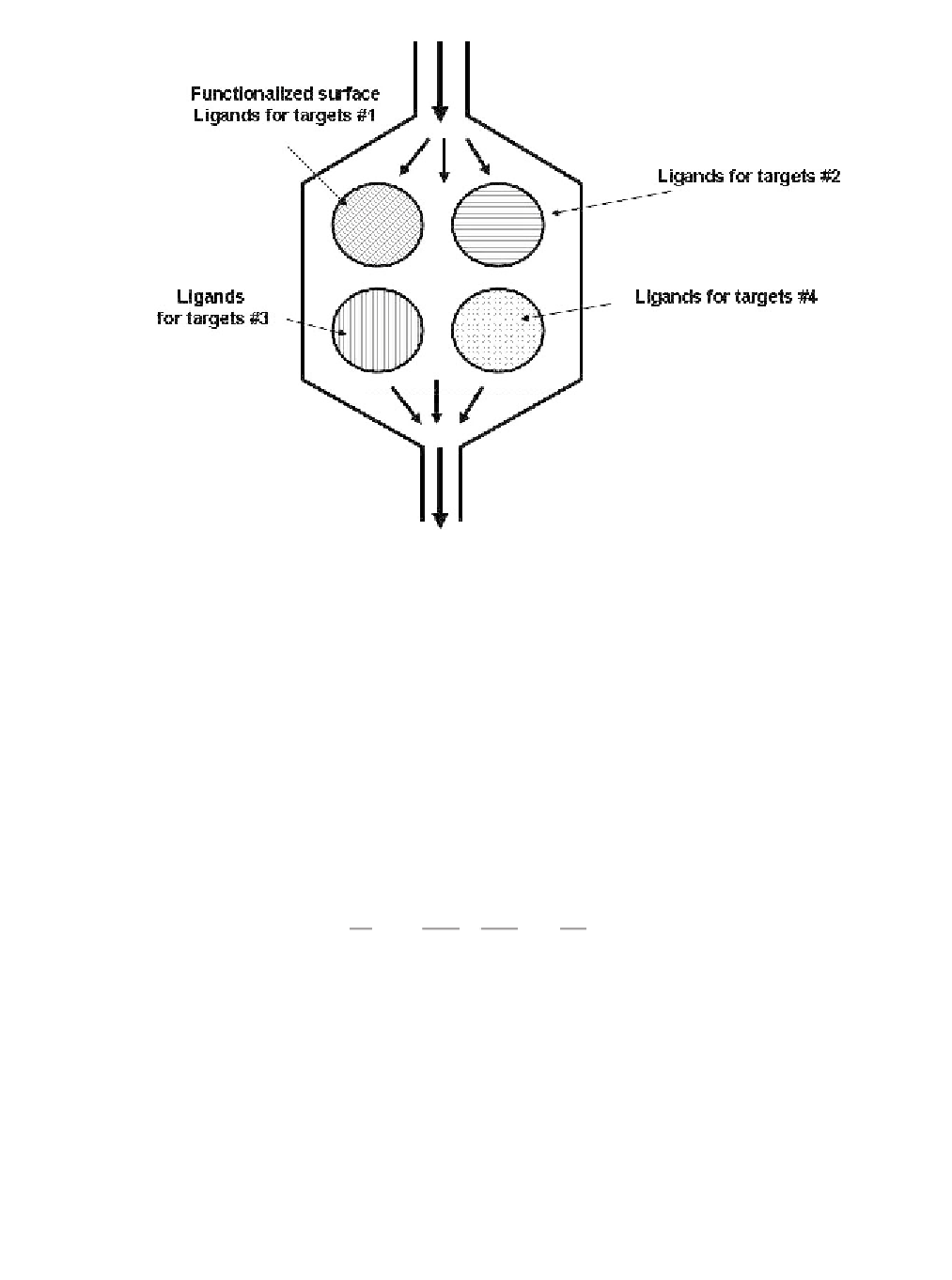Biomedical Engineering Reference
In-Depth Information
Figure 7.44
Schematic view of a typical hybridization microchamber, with different types of “spots”
for hybridization.
where
c
is the concentration of targets or analytes,
D
is its diffusion coefficient,
and
v
is the flow velocity. Very often the channel is such that we can use a Hagen-
Poiseuille velocity field (see Chapter 1). In the case of a flat channel limited by two
parallel plates separated by a distance
d
, the flow velocity is
2
é
ù
3
y
æ
ö
v y
( )
=
v
1
-
ê
ú
ç
÷
(7.86)
è
ø
2
d
/ 2
ê
ú
ë
û
where
_
is the average velocity in the channel. Because the fluid velocity is directed
along the
x
-axis, the advection-diffusion equation can be cast into the form
æ
2
2
ö
c
c
c
c
∂
∂
∂
∂
=
D
+
-
v
(7.87)
ç
÷
2
2
∂
t
∂
x
∂
x
∂
y
è
ø
At the functionalized wall, the Langmuir model for binding yields
d
G
=
k c
(
G - G -
)
k
G
(7.88)
on w
0
off
d t
where G is the concentration in immobilized analytes, G
0
the initial concentration in
available hybridization sites,
k
on
the adsorption coefficient at the wall,
k
off
the desorp-
tion coefficient at the wall—also called elution—and
c
w
the concentration at the wall.


